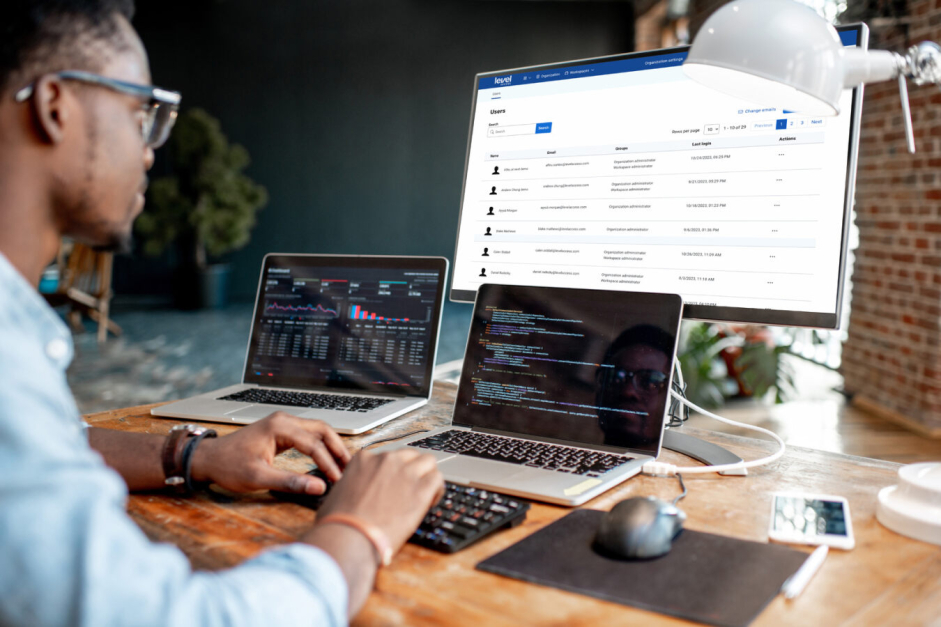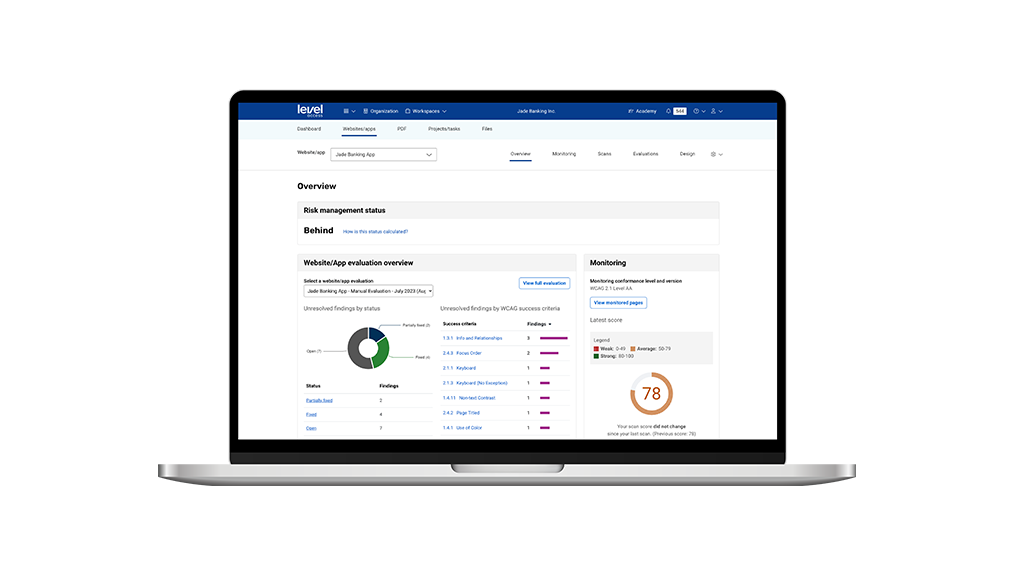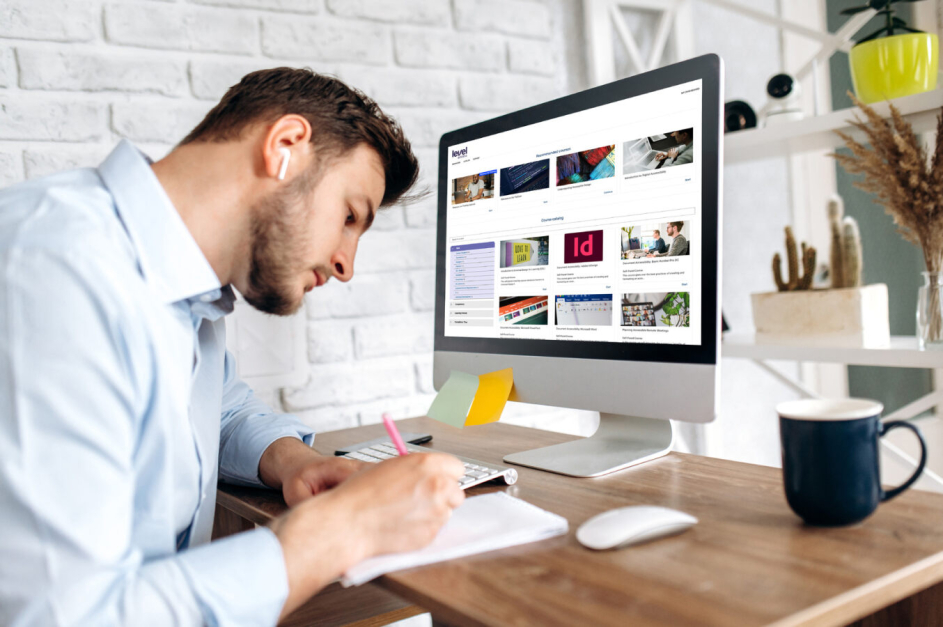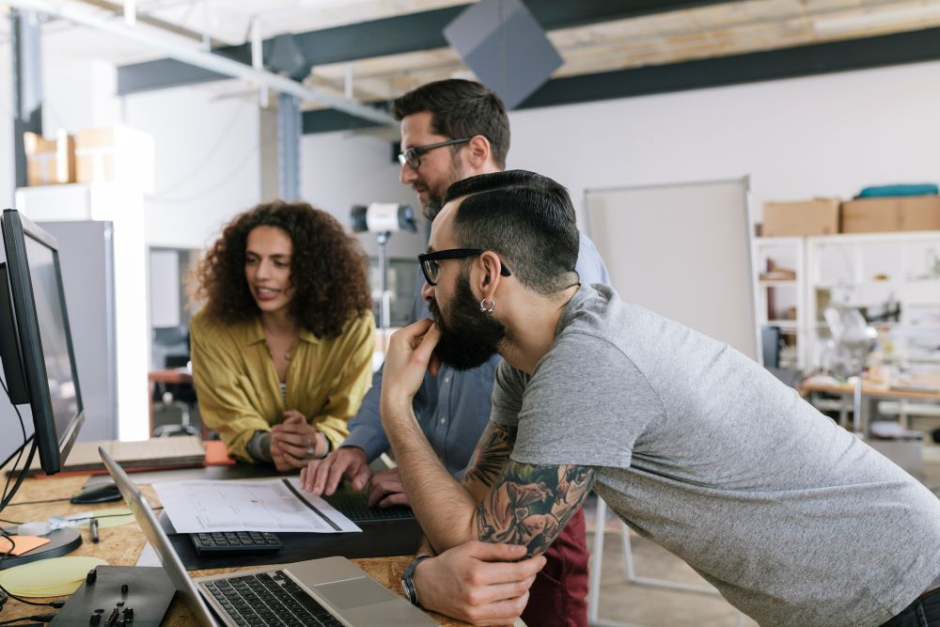Accessibility for the Enterprise
Security, scalability, reliability
When it comes to choosing a technology provider, enterprise organizations need a partner that upholds the highest standards for security while accounting for the scale and complexity of their operations. As the only digital accessibility solution uniquely designed to support the enterprise, Level Access combines industry-leading expertise with secure software that seamlessly integrates into your existing business processes so you can ensure compliance with confidence.
Trusted by the world’s leading brands
The only solution built for enterprise
Based on decades of experience empowering Fortune 500 companies, we’ve tailored our platform and services to meet the specific needs of enterprise organizations.
Outcomes, not hours
We provide unlimited access to seats and support, so you can skip the change orders and stay focused on results.
Scalable software
Our platform centralizes workflow management across complex, matrixed organizations, serving as a unified system-of-record for accessibility progress across your entire digital portfolio.
Your forever coach
We offer the industry’s deepest bench of digital accessibility expertise. Receive one-on-one guidance from subject matter experts in accessible design, development, and more.
Recognized as a Leader by Forrester
“Level Access is the best fit for companies looking for a vendor with a platform-first approach and strong, enterprise-ready features.”
The Forrester Wave™, Digital Accessibility Platforms, Q4 2023
Empowering global industry leaders
-

“When we started our accessibility journey, Level Access met us where we were. The team guided us and supported us every step of the way. And now our program is flourishing, with Level Access still by our side.”
-

“The Swiss Army knife of accessibility tools! [Level Access] has extensive information covering all global accessibility guidelines set by W3C and other international laws. And the Level Access support team is responsive, attentive, and helpful.”
-

“Level Access served as both the strategic and delivery partner to close our tech debt. In less than two years, we addressed our tech debt and became a center of excellence for how organizations across the enterprise should operate.”
Integrated software, streamlined accessibility
With no user limits, advanced security, and unparalleled governance capabilities, the Level Access Platform is an engine for effective accessibility management across large organizations.
User management
While we don’t cap the number of seats in our platform, we know that different stakeholders require different permissions. Our comprehensive user management capabilities ensure that the right people access the right information at the right time.

Security and SSO
The Level Access Platform has achieved SOC 2 and ISO 27001 certification, validating our commitment to upholding the highest level of customer information security. Single sign-on (SSO) provides an added layer of protection for sensitive data. We also offer the only digital accessibility solution cleared for security by the U.S. federal government’s FedRAMP authorization program.
Reporting and analytics
Our reporting dashboards provide a single source of truth for all accessibility data across your organization. Access detailed insight on the accessibility health of individual web pages or entire digital portfolios and leverage our governance solution to track adherence with custom accessibility policies over time.

Training
Upskill every team involved in digital accessibility with live and self-paced training through our Academy. We offer hundreds of practical courses from accessibility experts, with specific learning paths for designers, developers, content creators, and other key roles.

Follow through on your DEI commitments
Digital accessibility is an integral part of an enterprise-wide diversity, equity, and inclusion (DEI) practice. We’ll work with you on an accessibility policy that upholds your DEI commitment, and help you craft an accessibility statement to communicate your efforts to the public.
Get started
An expert partner that understands your enterprise
The world’s most established and ambitious organizations trust Level Access to launch, streamline, and advance digital accessibility programs at scale. Connect with a member of our team today to learn more about how our solution can help you meet your goals.


